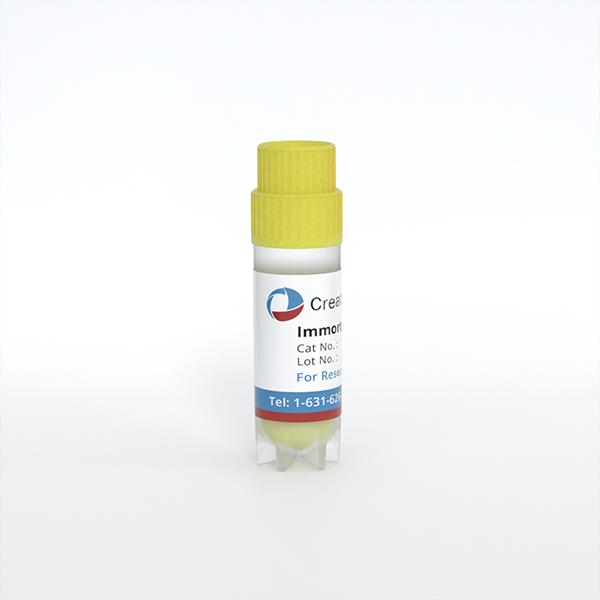Featured Products
Our Promise to You
Guaranteed product quality, expert customer support

ONLINE INQUIRY

Immortalized Human Mammary Epithelial Progenitor (K5+/K19+) Cells-hTERT
Cat.No.: CSC-I9211L
Species: Homo sapiens
Source: Mammary
Morphology: Cobblestone or Spindle-shaped
Culture Properties: Adherent
- Specification
- Q & A
- Customer Review
Cat.No.
CSC-I9211L
Description
The immortalized human mammary progenitor cells – hTERT (K5+/K19+) is a clonal cell population of progenitors coexpressing normal mammary and stem cell markers. It has the ability to self-renew and differentiate into luminal and/or myoepithelial cell lineages. Through propagation in different optimized media, the cells are able to give rise to new population of cells with different morphology and characteristics, such as mucin-1 positive cells, vimentin-negative cells, or expressing basal, luminal, and other stem cell markers. Aldehyde dehydrogenase 1A3 enzyme is noticeably higher in expression, a marker commonly used for isolating normal and tumor mammary stem cells. K5+/K19+cells have Wnt, Notch, and hedeghog gene regulatory pathways. It is a valuable tool in research in the field of biology, the stem/progenitor origin, and the heterogeneity mechanisms in breast cancer.
Species
Homo sapiens
Source
Mammary
Culture Properties
Adherent
Morphology
Cobblestone or Spindle-shaped
Immortalization Method
Serial passaging and transduction with recombinant lentiviruses carrying hTERT gene
Markers
K5, K14, vimentin, E-cadherin, p63, K8, K18, K19, CD29, CD49fa-SMA, CD10, Thy-1 when grown in DCFI-1
Applications
For Research Use Only
Storage
Directly and immediately transfer cells from dry ice to liquid nitrogen upon receiving and keep the cells in liquid nitrogen until cell culture needed for experiments.
Note: Never can cells be kept at -20 °C.
Note: Never can cells be kept at -20 °C.
Shipping
Dry Ice.
Recommended Products
CIK-HT013 HT® Lenti-hTERT Immortalization Kit
Quality Control
1) Western blot to assess cell lineage-related and stem cell markers;
2) Immunofluorescence staining analysis for lineage markers;
3) Gene expression profiling for gene regulatory pathways.
2) Immunofluorescence staining analysis for lineage markers;
3) Gene expression profiling for gene regulatory pathways.
BioSafety Level
II
Citation Guidance
If you use this products in your scientific publication, it should be cited in the publication as: Creative Bioarray cat no. If your paper has been published, please click here to submit the PubMed ID of your paper to get a coupon.
Ask a Question
Write your own review
Related Products

